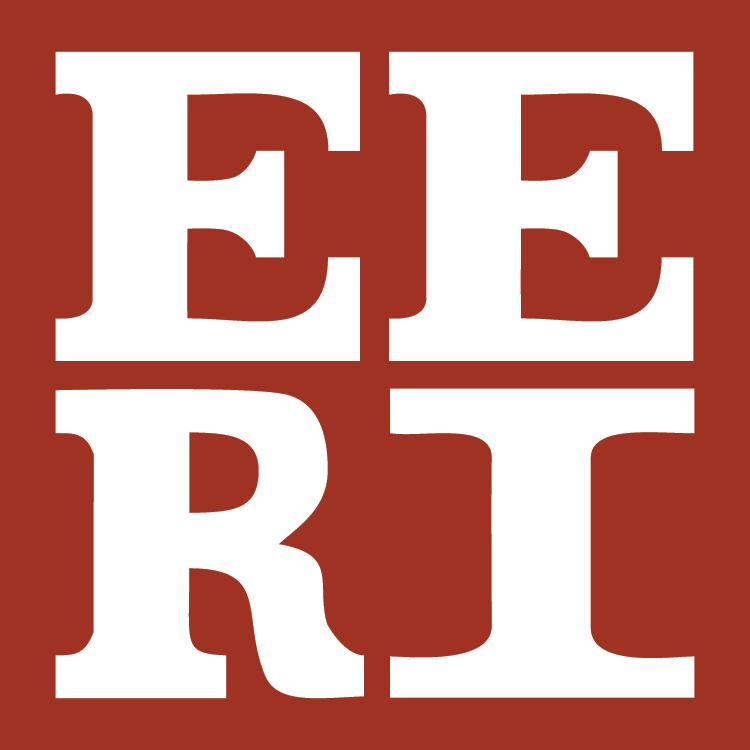Speaker Information: 6th Kenji Ishihara Colloquium Series on Earthquake Engineering
Punctuated Resilience, Climate Change and Bio-Geotechnics
Speakers and Abstracts
Alejandro Martinez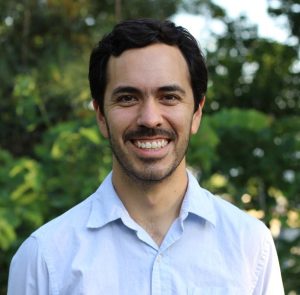
Associate Professor, University of California, Davis
Snakeskin-inspired piles and soil anchors: from bio-inspiration to field implementation
Abstract: Many aspects of the construction and performance of infrastructure rely on load transfer between soils and structures. Examples include deep foundations, soil anchors, and geosynthetics. This presentation will highlight the application of bioinspiration towards the transfer of load at soil-structure interfaces, with an emphasis on piled foundations and soil anchors. A dilemma in design exists: while large skin friction promotes a large capacity, it can also lead to difficulties during installation (i.e. refusal). To address this, surfaces with textures inspired by the belly scales of snakes were designed to assess the potential for mobilizing direction-dependent friction, and centrifuge and field load tests were performed to assess their effect the shaft capacity of piles and soil anchors. The laboratory, centrifuge, and field results reveal that greater skin friction is mobilized when the surfaces and piles are displaced in the cranial direction (i.e. soil moving against asperities) than when they are displaced in the caudal direction (i.e. soil moving along asperities). This direction-dependence is shown to be due to the greater soil deformation induced when the surfaces are displaced in the cranial direction. Cyclic interface shear tests and centrifuge load tests inform the degradation of skin friction mobilized by the bioinspired surfaces and piles. This presentation will discuss the potential benefits of the snakeskin-inspired surfaces in sites with sandy and clayey soils.
Bio: Alejandro Martinez is an associate professor at the University of California Davis. He obtained his Ph.D. and M.S. degrees from Georgia Tech in 2015 and 2012, respectively, and his B.S. from the University of Texas at Austin in 2010. His research aims to further the understanding of soil behavior and soil-inclusion interactions involved in geotechnical engineering. His research interests include bio-inspired geotechnics, soil-structure interactions, offshore geotechnics, and fabric effects on soil behavior. His research employs a combination of experimental laboratory, centrifuge modeling, and numerical techniques. In 2020, he received the NSF CAREER award and in 2022 he received the ASCE Arthur Casagrande Career Development Award.
Thomas O’Rourke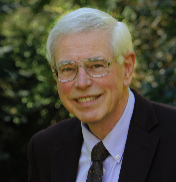
Thomas R. Briggs Professor of Engineering Emeritus, School of Civil and Environmental Engineering, Cornell University
Punctuated Resilience
Abstract: The concept of punctuated equilibrium, as advanced by Stephen Jay Gould and Niles Eldredge, is applied to infrastructure in this presentation. Professor O’Rourke will discuss how key infrastructure policies have been punctuated by hazards that affect the built environment. Just as the fossil record is composed of flash pictures that imply catastrophic change, so the record of hazards can provide a similar impression. Hazards that occurred once every generation, now occur almost yearly. Professor O’Rourke will explore how frequent hazards, such as hurricanes, affect resilience, and become a mechanism for improving the engineering and management of critical facilities. The agents of change that lead to improved policies and approaches are explored, including new technologies and the engagement of community support.
Bio: Tom O’Rourke is the Thomas R. Briggs Professor of Engineering Emeritus in the School of Civil and Environmental Engineering at Cornell University. He is a member of the US National Academy of Engineering, Distinguished Member of ASCE, International Fellow of the Royal Academy of Engineering, Member of the Mexican Academy of Engineering, and a Fellow of the American Association for the Advancement of Science. He authored or co-authored over 440 technical publications, and has received numerous awards for his research. His interests cover geotechnical engineering, earthquake engineering, underground construction technologies, engineering for large, geographically distributed systems, and geographic information technologies and database management.
J. Carlos Santamarina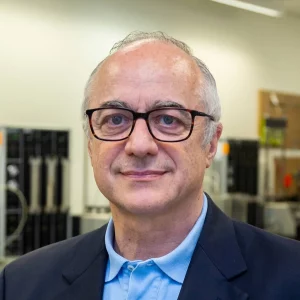
Professor & G. Wayne Clough Chair, Georgia Institute of Technology
The Energy-Climate-Livability Challenge: New Roles for the Earthquake Engineering Community
Abstract: Climate change is rapidly emerging as a significant threat to daily life, with profound implications for livability and the infrastructure. Caused by our reliance on fossil fuels, climate change affects water and food security, urban development, migration and consumption patterns, and policy at both national and international levels. The multifaceted consequences of the energy-climate-livability challenge are already testing vulnerabilities across all sectors, disproportionately affecting the most susceptible populations. The earthquake engineering community has a role to play in addressing these evolving challenges. Key areas include the seismic design of new and retrofitted civil infrastructure, the reimagined transportation systems, new onshore and offshore energy infrastructure (wind, solar, and storage systems – ranging from household to grid-scale), and mining operations for critical minerals essential for the energy transition. Special attention should be given to seismicity induced by energy projects (geothermal and hydraulic fracturing for oil and gas) and the interaction between more frequent extreme climatic events and seismic activity (e.g., more pronounced debris flows). Furthermore, the earthquake engineering community’s expertise with cyclic loading can be extended to the analysis of energy infrastructure subjected to low-amplitude repetitive loads, including storage systems, wind turbines, and thermally active components.
Bio: J. Carlos Santamarina (Professor and Clough Chair, Georgia Tech) earned his bachelor’s degree from the Universidad Nacional de Córdoba and completed graduate studies at the University of Maryland and Purdue University. Throughout his career, he has taught at NYU-Poly, the University of Waterloo, and King Abdullah University of Science and Technology. His research team utilizes a combination of experimental and numerical methods to investigate geomaterials (sediments, fractured rocks, and complex fluids) within the context of energy geo-science and engineering, from resource recovery to energy and waste geostorage. He delivered the50th Terzaghi Lecture on Energy Geotechnology and is a member of both Argentinean National Academies.
Christopher Wills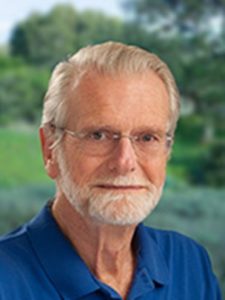
Professor Emeritus, University of California, San Diego
Punctuated Equilibrium and How It Works
Abstract: In 1972, Niles Eldredge and Stephen Jay Gould introduced the term “punctuated equilibrium” to describe the bursts of evolution that follow sudden major changes in the Earth’s environment, and the long periods of relative stasis that lay between these giant events. Now, we realize that many groups of organisms have managed to survive even the severest punctuations, and that waves of extinction have taken place even during periods of slower evolutionary change. Major extinction events do put severe stress on the entire biosphere, but we will see how Darwinian evolution enables life to recover from these stresses. The powerful process of evolution often takes life in new directions even without the aid of giant environmental disasters.
Bio: Born in England, Christopher Wills grew up in Canada. From1972 until his retirement in 2010 he was associate and full professor of biology at the University of California, San Diego. He was the first to deliberately select for genetic variants in enzymes. He has explored the roles of genetic recombination in the maintenance of genetic variation in Drosophila and yeast, and the role of microsatellite DNA variation in the evolution of diseases and the evolution of our species. Most recently, he has organized a large group of ecologists from around the world to apply new analytical methods to the forces that are maintaining variation in complex ecosystems such as rainforests and coral reefs. He has written nine books for the general public on evolution and ecology, the most recent being “Why Ecosystems Matter” (Oxford University press, 2024). In 1999, he received the Award for Public Understanding of Science and Technology from the American Association for the Advancement of Science.
6th Kenji Ishihara Colloquium Series on Earthquake Engineering
USGS Software Tools for Site-Specific Ground Motion Hazard Analysis
A Three-Quarter Day Short Course
Nicolas Luco, Supervisory Research Structural Engineer, U.S. Geological Survey
Peter Powers, Research Geophysicist, U.S. Geological Survey
Jorge F. Meneses, Senior Principal Geotechnical Engineer, Worley Consulting
Friday, September 13th, 2024, 8am-2:30pm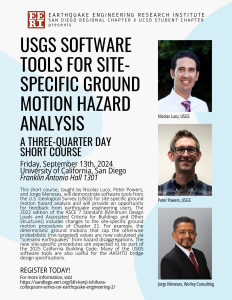
University of California, San Diego
Franklin Antonio Hall 1301
This short course will demonstrate software tools from the U.S. Geological Survey (USGS) for site-specific ground motion hazard analysis and will provide an opportunity for feedback from earthquake engineering users. The 2022 edition of the ASCE 7 Standard (Minimum Design Loads and Associated Criteria for Buildings and Other Structures) includes changes to the site-specific ground motion procedures of Chapter 21. For example, the deterministic ground motions that cap the otherwise probabilistic (risk-targeted) values are now calculated via “scenario earthquakes” from hazard disaggregations. The new site-specific procedures are expected to be part of the 2025 California Building Code. Many of the USGS software tools are also useful for the AASHTO bridge design specifications.
MEET THE INSTRUCTORS
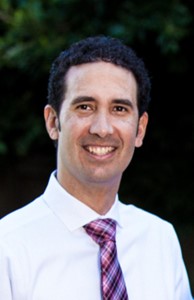
Dr. Nicolas Luco
Nico is a Supervisory Research Civil Engineer with the U.S. Geological Survey (USGS) at its Geologic Hazards Science Center in Golden, Colorado. There he serves as the Project Lead for the National Seismic Hazard Model, as of 2024. He also serves as a USGS Liaison on numerous external engineering committees that develop the seismic provisions of U.S. building codes, including the American Society of Civil Engineers (ASCE) Seismic Subcommittees for the ASCE 7 and 41 Standards. Prior to joining the USGS in 2004, he was a Senior Analysis Engineer with the insurance risk modeling company AIR Worldwide Corporation. He earned his PhD and BS in civil/structural engineering, and an MS in statistics, from Stanford University; his MS in civil/structural engineering is from the University of California, Berkeley.
Dr. Peter Powers
Peter Powers is a research and development geophysicist at the U.S. Geological Survey. Peter started his career as a geologist and worked in both the mining and tech sectors before attending the University of Southern California, from which he received a PhD in geophysics and seismology. He began his time at the USGS in 2008 as a Global Earthquake Model (GEM) post-doc and developer of OpenSHA and the Uniform California Earthquake Rupture Forecast version 3 (UCERF3). He now develops software and tools to support updates to USGS national hazard models and related research.
Dr. Jorge F. Meneses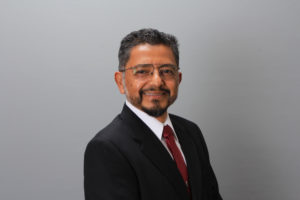
Dr. Jorge F. Meneses is a Senior Principal Geotechnical Engineer with Worley Consulting and has more than 30 years of consultancy, project management, research, and teaching experience, in both private industry and research institutions in the field of geotechnical and earthquake engineering. He has been involved in numerous projects serving as a technical lead in geotechnical earthquake engineering and foundation engineering across the country and various markets including water, nuclear, transportation, high rise buildings, energy, schools, hospitals, commercial and industrial. Dr. Meneses frequently acts as a peer reviewer for technical conferences and technical journal publications, is a guest speaker for domestic and international conferences, and has published more than 60 technical publications. He is currently a part-time faculty member in the graduate school of San Diego State University. He was the President and Founder of the Earthquake Engineering Research Institute (EERI) San Diego Chapter, California Seismic Safety Commissioner, Member of the EERI Board of Directors, Honorary Chair of the ASCE Geo-Institute San Diego Chapter, ex-Member of the ASCE 7-16 (Minimum Design Loads for Buildings and Other Structures), member of the ASCE 1 (Geotechnical Analysis, Design, Construction, Inspection and Monitoring of Nuclear Safety-Related Structures) and ASCE 7-28 Committees, member of the Academy of Geo-Professionals, member of the Academy of Geo-Professionals, and a Fellow of the American Society of Civil Engineers (ASCE).
PROGRAM
| Time | Topic/Speaker | |
|---|---|---|
| 8:00am | 9:00am | Registration and Breakfast |
| 9:00am | 9:15am | Welcome and Overview of Program |
| 9:15am | 9:45am | ASCE 7-22 Chapter 21 Site-Specific Ground Motion Procedures Jorge F. Meneses |
| 9:45am | 10:30am | USGS Application of Site-Specific Procedures for ASCE 7-22 Chapter 22 Ground Motion Maps Nicolas Luco |
| 10:30am | 10:45am | Break |
| 10:45am | 11:30am | Site-Specific Hazard Curves from USGS Earthquake Hazard Toolbox Peter Powers |
| 11:30am | 12:00pm | Updated USGS Risk-Targeted Ground Motion Calculator Nicolas Luco |
| 12:00pm | 1:00pm | Lunch |
| 1:00pm | 1:30pm | Site-Specific Disaggregations from USGS Earthquake Hazard Toolbox Peter Powers |
| 1:30pm | 2:00pm | Deterministic Response Spectra from USGS Earthquake Hazard Toolbox Peter Powers |
| 2:00pm | 2:30pm | Other Current and Future USGS Software Tools Peter Powers and Nicolas Luco |
VENUE
University of California, San Diego
Franklin Antonio Hall 1301
3180 Voigt Drive
La Jolla, CA 92093
REGISTRATION
Click here to register for the short course.
LODGING
Click here for a list of hotels near UCSD.
PARKING
There are two structures available for parking near Franklin Antonio Hall: Hopkins and Pangea. The closest parking structure to the venue is Hopkins Parking Structure (view here or here), located on Voigt Dr. off of Hopkins Dr. Please park on Level 7 (top floor – Parking Lot P347) where there are 92 visitor parking spaces. No other levels have visitor parking.
If Hopkins is full, please go to Pangea Parking Structure (view here or here), located on Pangea Dr. off of N. Torrey Pines Rd. Please park on Level 6 (top floor – Parking Lot P376) where there are 100 visitor parking spaces. The 5th floor only has 9 visitor parking spaces.
Parking can be paid for at a pay station within the structure, or through the ParkMobile app or website. More information can be found here.
Click image below to see the parking structures and venue highlighted (from https://maps.ucsd.edu/map/default.htm):
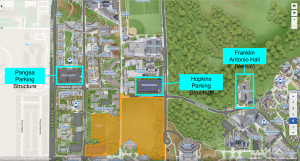
Click image below to see the parking structures and venue highlighted on Google Maps (from https://act.ucsd.edu/maps/):
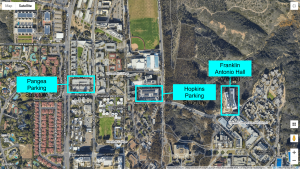
6th Kenji Ishihara Colloquium Series on Earthquake Engineering
Punctuated Resilience, Climate Change, and Bio-Geotechnics | Next-Generation Liquefaction Modeling of Liquefaction Triggering and Surface Manifestation
Thursday, September 12th, 2024, 8am-5pm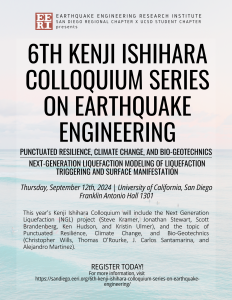
University of California, San Diego
Franklin Antonio Hall 1301
This year’s Kenji Ishihara Colloquium will include the Next Generation Liquefaction (NGL) project (Steve Kramer, Jonathan Stewart, Scott Brandenberg, Ken Hudson, and Kristin Ulmer) and the topic of Punctuated Resilience, Climate Change, and Bio-Geotechnics (Christopher Wills, Thomas O’Rourke, J. Carlos Santamarina, and Alejandro Martinez).
PROGRAM
Session 1: Punctuated Resilience, Climate Change, and Bio-Geotechnics
| 8:00am | 9:00am | Registration and Breakfast |
| 9:00am | 9:05am | Welcome and Overview of Program |
| 9:05am | 9:35am | Punctuated Equilibrium and How It Works Christopher Wills |
| 9:35am | 10:05am | Punctuated Resilience Thomas O'Rourke |
| 10:05am | 10:25am | Discussion |
| 10:25am | 10:40am | Break |
| 10:40am | 11:10am | Snakeskin-inspired piles and soil anchors: from bio-inspiration to field implementation Alejandro Martinez |
| 11:10am | 11:40am | The Energy-Climate-Livability Challenge: New Roles for the Earthquake Engineering Community J. Carlos Santamarina |
| 11:40am | 12:00pm | Discussion |
| 12:00pm | 1:00pm | Lunch |
Session 2: Next-Generation Liquefaction Modeling of Liquefaction Triggering and Surface Manifestation
| 1:00pm | 1:15pm | Project Overview and Database Overview John Stamatakos, Jonathan Stewart |
| 1:15pm | 1:40pm | Model Development Philosophy - Bayesian Framework Steven Kramer (Video) |
| 1:40pm | 2:05pm | Laboratory-Based Triggering Model Kristin Ulmer |
| 2:05pm | 2:30pm | Discussion |
| 2:30pm | 2:45pm | Break |
| 2:45pm | 3:20pm | Case History Processing Kenneth Hudson |
| 3:20pm | 3:45pm | Critique of Critical Layer Approach to Model Development Jonathan Stewart |
| 3:45pm | 4:00pm | Profile-Based Model Development Approach Scott Brandenberg |
| 4:00pm | 4:35pm | Proposed Manifestation and Triggering Models Kenneth Hudson |
| 4:35pm | 5:00pm | Discussion |
VENUE
University of California, San Diego
Franklin Antonio Hall 1301
3180 Voigt Drive
La Jolla, CA 92093
REGISTRATION
Click here to register for the colloquium.
LODGING
Click here for a list of hotels near UCSD.
PARKING
There are two structures available for parking near Franklin Antonio Hall: Hopkins and Pangea. The closest parking structure to the venue is Hopkins Parking Structure (view here or here), located on Voigt Dr. off of Hopkins Dr. Please park on Level 7 (top floor – Parking Lot P347) where there are 92 visitor parking spaces. No other levels have visitor parking.
If Hopkins is full, please go to Pangea Parking Structure (view here or here), located on Pangea Dr. off of N. Torrey Pines Rd. Please park on Level 6 (top floor – Parking Lot P376) where there are 100 visitor parking spaces. The 5th floor only has 9 visitor parking spaces.
Parking can be paid for at a pay station within the structure, or through the ParkMobile app or website. More information can be found here.
Click image below to see the parking structures and venue highlighted (from https://maps.ucsd.edu/map/default.htm):

Click image below to see the parking structures and venue highlighted on Google Maps (from https://act.ucsd.edu/maps/):


